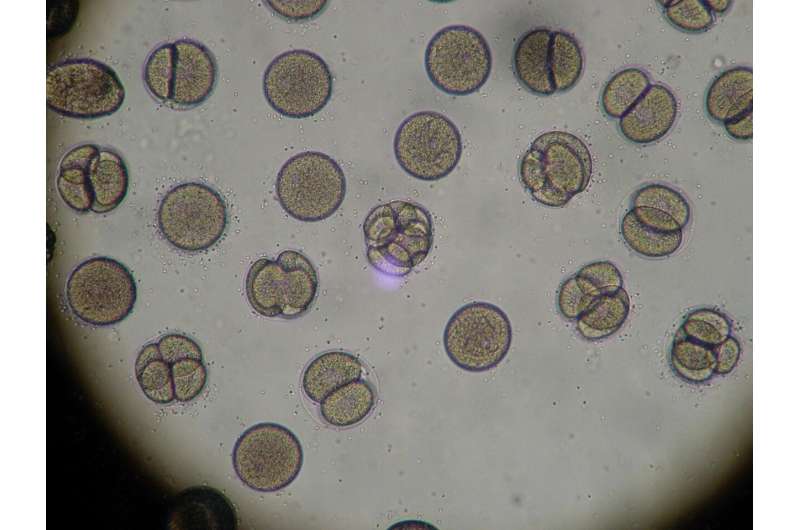This article has been reviewed according to Science X's editorial process and policies. Editors have highlighted the following attributes while ensuring the content's credibility:
fact-checked
peer-reviewed publication
trusted source
proofread
Study reveals long-debated makeup of the molecules that help organize your cells

For years, we've known that a special kind of molecular assembly known as a "polyelectrolyte complex" helps your cells keep themselves organized. These complexes are very good at forming interfaces to keep two liquids separated: your cells use them to create compartments. These abilities have led scientists to consider them for technological applications, including filtering water, better batteries, and even underwater glue, as well as for better pharmaceutical drugs.
But for decades, no one knew exactly how the regions looked inside a polyelectrolyte complex. There are positively charged and negatively charged chains, but how do they line up? Were they arranged in neat alternating lines, or more like what a Russian scientist termed "scrambled eggs"?
A new study from the University of Chicago's Pritzker School of Molecular Engineering has laid out the internal structure of polyelectrolyte complexes for the first time. The findings are published in the journal Proceedings of the National Academy of Sciences.
"Knowing the molecular structure means you can synthesize them and prepare them more precisely, which creates opportunities for applications," said study co-author Juan de Pablo, the Liew Family Professor of Molecular Engineering and senior scientist at Argonne National Laboratory.
Simulations and scattering
A team of scientists led by de Pablo and Matt Tirrell, dean of the Pritzker School of Molecular Engineering and also a senior scientist at Argonne, undertook a years-long exploration to pin down the mystery.
First, postdoctoral researchers Artem Rumyantsev (now on the faculty of North Carolina State University) and Heyi Liang developed molecular models and carried out thousands of simulations, as well as theoretical calculations based on statistical mechanics, to understand the most likely way these molecules would assemble.
Next, a group led by graduate student Yan Fang and postdoctoral researcher Angelika Neitzel (now at the University of Florida) worked to create precise versions of these molecules in the laboratory and use an advanced technique to determine their structure.
One of the few ways to see the fine details of such molecules is with a technique called neutron scattering. This is done by sending beams of neutrons—the neutral particles that make up atomic nuclei—at the molecules, and then reconstructing their patterns from the way the neutrons scatter away. But normally, the positively charged and negatively charged chains look the same when you do this.
To tell them apart, the researchers used a clever trick. Both chains have hydrogen atoms in them. But the team replaced the hydrogen atoms in the positively charged chains with a very slightly different version of hydrogen, known as deuterium, which shows up differently when the neutrons scatter off it.
Using this approach, they could see that the chains did have distinct small-scale repeating patterns, though they were not rigorously ordered over long distances.
A powerful combination
The scientists explained that once you know the molecular structure for these molecules, you can think about using them for other applications. In addition to being important for understanding how our bodies and biology work, polyelectrolyte complexes' unique abilities make them very attractive to scientists and engineers.
"These droplets still have a lot of water with them, which makes their interfacial tension low—so they tend to encapsulate objects or spread over surfaces and adhere, which are both very useful behaviors," explained Tirrell. "You can use this to deliver drugs in the body, or for things like designing an underwater adhesive."
Tirrell added that the study is a model for how theoretical and experimental science groups can work together: "It's a very powerful combination of these two approaches. It wouldn't have happened with either group working in isolation."
More information: Fang, Yan N. et al, Scattering evidence of positional charge correlations in polyelectrolyte complexes, Proceedings of the National Academy of Sciences (2023). DOI: 10.1073/pnas.2302151120
Journal information: Proceedings of the National Academy of Sciences
Provided by University of Chicago



















